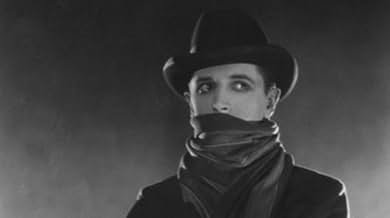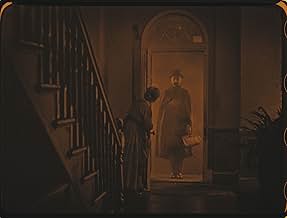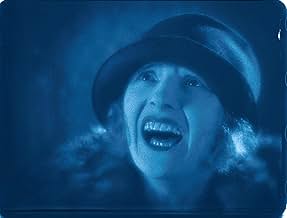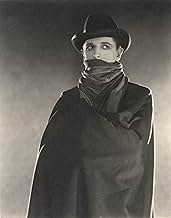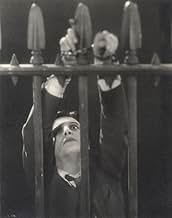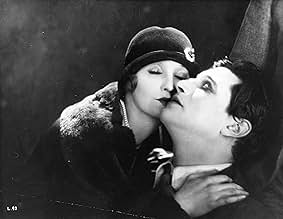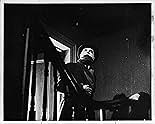NOTE IMDb
7,3/10
14 k
MA NOTE
Une femme soupçonne que son nouveau locataire est le psychopathe qui tue des femmes à Londres.Une femme soupçonne que son nouveau locataire est le psychopathe qui tue des femmes à Londres.Une femme soupçonne que son nouveau locataire est le psychopathe qui tue des femmes à Londres.
June Tripp
- Daisy - A Mannequin
- (as June)
Wallace Bosco
- Pub Customer
- (non crédité)
Daisy Campbell
- Mother
- (non crédité)
Maudie Dunham
- First Victim
- (non crédité)
Reginald Gardiner
- Dancer at Ball
- (non crédité)
Eve Gray
- Showgirl Victim
- (non crédité)
Alfred Hitchcock
- Extra in Newspaper Office
- (non crédité)
Alma Reville
- Woman Listening to Wireless
- (non crédité)
Commentaire à la une
Usually remembered as Alfred Hitchcock's first thriller, "The Lodger" is also a very good film in its own right. Although the acting is somewhat dated, and although there is not a really appropriate musical score that has survived, it has the carefully crafted plot and suspense that Hitchcock would become famous for.
The opening sequence uses the director's creative touches in setting the mood of a city terrorized by a mysterious killer, "The Avenger", who is targeting light-haired women. Then we meet the actual characters: an older couple and their daughter Daisy, and Daisy's policeman boyfriend. When a mysterious lodger appears and rents the family's extra room, his strange behavior begins to make them suspect that he might be the mad killer, even as he builds a close friendship with Daisy. As the story proceeds, tension and fear continue to build until an ending that is exciting, if somewhat melodramatic.
Hitchcock shows his mastery of silent film technique in using a wide variety of camera techniques and props to communicate the emotions of the characters. The acting is mostly good, although Ivor Novello as "the lodger" overplays his role rather noticeably. This is the kind of movie that could really benefit from a good musical soundtrack, and the fact that it is exciting to watch even without an appropriate score shows the quality of Hitchcock's craftsmanship.
Anyone who enjoys Hitchcock or silent films will definitely want to see "The Lodger".
The opening sequence uses the director's creative touches in setting the mood of a city terrorized by a mysterious killer, "The Avenger", who is targeting light-haired women. Then we meet the actual characters: an older couple and their daughter Daisy, and Daisy's policeman boyfriend. When a mysterious lodger appears and rents the family's extra room, his strange behavior begins to make them suspect that he might be the mad killer, even as he builds a close friendship with Daisy. As the story proceeds, tension and fear continue to build until an ending that is exciting, if somewhat melodramatic.
Hitchcock shows his mastery of silent film technique in using a wide variety of camera techniques and props to communicate the emotions of the characters. The acting is mostly good, although Ivor Novello as "the lodger" overplays his role rather noticeably. This is the kind of movie that could really benefit from a good musical soundtrack, and the fact that it is exciting to watch even without an appropriate score shows the quality of Hitchcock's craftsmanship.
Anyone who enjoys Hitchcock or silent films will definitely want to see "The Lodger".
- Snow Leopard
- 13 juin 2001
- Permalien
Histoire
Le saviez-vous
- AnecdotesFor the opening of this movie, Sir Alfred Hitchcock wanted to show the Avenger's murder victim being dragged out of the Thames River at night with the Charing Cross Bridge in the background, but Scotland Yard refused his request to film at the bridge. Hitchcock repeated his request several times, until Scotland Yard notified him that they would "look the other way" if he could do the filming in one night. Hitchcock quickly sent his cameras and actors out to Charing Cross Bridge to film the scene, but when the rushes came back from the developers, the scene at the bridge was nowhere to be found. Hitchcock and his assistants searched through the prints, but could not find it. Finally, Hitchcock discovered that his cameraman had forgotten to put the lens on the camera before filming the night scene.
- GaffesWhen The Lodger (Ivor Novello) and Daisy (June Tripp) are playing chess, but the board is set up inappropriately. The square in the right corner should always be white. In this case, the bottom-right square is dark (black). This is the most obvious when The Lodger (Ivor Novello) is poking the coals in the fireplace.
- Citations
Joe Betts: Does this lodger of yours mean any harm to Daisy?
The Landlady: Don't be silly, Joe. He's not that sort. Even if he's a bit queer, he's a gentleman.
- Crédits fousClosing credits: Thank you to everyone who supported the BFI's Silent Hitchcock restoration project.
- Versions alternativesThe original version of The Lodger directed by Alfred Hitchcock in 1926 was restored in 1999 in honor of the directors 100th anniversary. The film was restored by the British National Film & TV Archives and a new score by Ashley Irwin was commissioned by ZDF/ARTE (Germany) and premiered on August 13, 1999 (what would have been Hitchcock's 100th birthday).
- ConnexionsEdited into Histoire(s) du cinéma: Une vague nouvelle (1999)
Meilleurs choix
Connectez-vous pour évaluer et suivre la liste de favoris afin de recevoir des recommandations personnalisées
Détails
Box-office
- Budget
- 12 000 £GB (estimé)
- Montant brut mondial
- 83 568 $US
- Durée1 heure 32 minutes
- Couleur
- Mixage
- Rapport de forme
- 1.33 : 1
Contribuer à cette page
Suggérer une modification ou ajouter du contenu manquant

Lacune principale
By what name was Les cheveux d'or (1927) officially released in India in English?
Répondre








